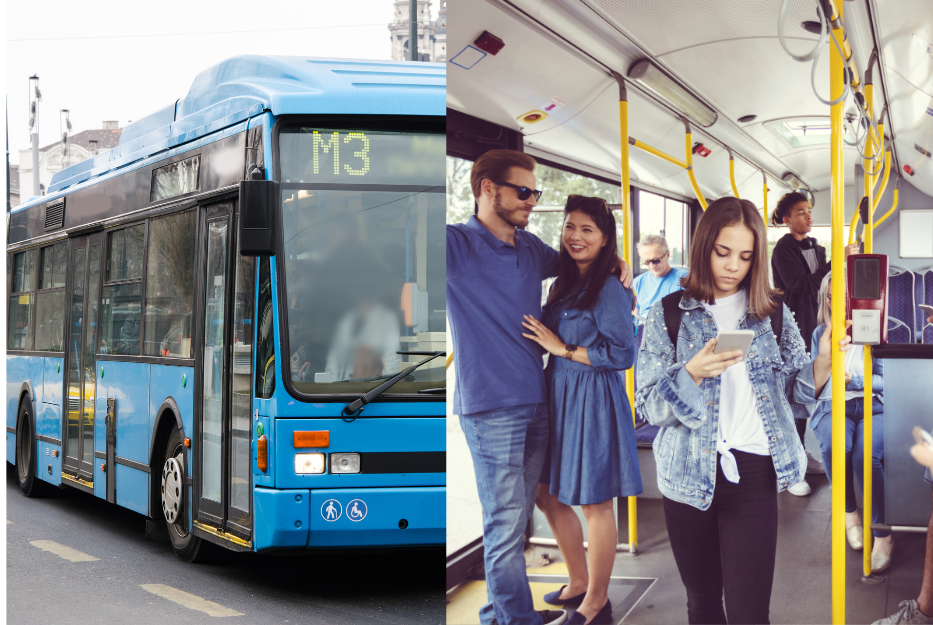**Please review the disclaimer at the end of this document before reading or using this guide.
Navigating public transport is essential for new immigrants in Canada, especially for post-secondary students who rely on it to commute to classes, work, and social activities. Canada’s public transport system is generally efficient, safe, and easy to use. This guide provides information to help new immigrants understand and use public transport in Canada.
Understanding the Public Transport System
Public transport in Canada includes buses, subways, light rail, streetcars, and ferries, depending on the city. Major cities like Toronto, Vancouver, Montreal, Calgary, and Edmonton have extensive public transport networks.
Key Transport Authorities:
- Toronto: Toronto Transit Commission (TTC)
- Vancouver: TransLink
- Montreal: Société de transport de Montréal (STM)
- Calgary: Calgary Transit
- Edmonton: Edmonton Transit Service (ETS)
Step 1: Plan Your Journey
- Transport Apps and Websites:
- Use apps like Google Maps, Transit, or the official apps of local transit authorities to plan your route.
- These tools provide real-time information on schedules, routes, and delays.
- Route Maps:
- Download route maps from the transit authority’s website or pick them up at stations or terminals.
- Schedules:
- Check schedules online or at bus stops and stations. Note peak and off-peak hours for frequency variations.
Step 2: Understanding Fare Systems
- Types of Tickets and Passes:
- Single Ride Tickets: Purchase for one-time use.
- Day Passes: Unlimited travel for one day.
- Monthly Passes: Unlimited travel for a month, often at a discounted rate.
- Prepaid Cards: Load money onto a card for convenient tap-and-go access. Examples include PRESTO (Toronto), Compass Card (Vancouver), and OPUS Card (Montreal).
- Student Discounts:
- Most transit systems offer discounted fares for students. You may need to show a student ID or apply for a special student card.
- Where to Buy:
- Tickets and passes can be bought at stations, convenience stores, online, or through mobile apps.
Step 3: Boarding and Exiting
- Bus:
- Boarding: Enter through the front door and tap your card or pay the fare. In some cities, you can also pay with exact cash.
- Exiting: Pull the cord or press the stop button to signal the driver. Exit through the rear door.
- Subway/Light Rail:
- Boarding: Enter the station, tap your card, or insert your ticket at the turnstile. Wait for the train behind the safety line.
- Exiting: Exit the train at your stop and follow signs to the station exit.
- Streetcars:
- Boarding and Exiting: Similar to buses, but be aware of the unique boarding procedures depending on the city.
Step 4: Safety and Etiquette
- Safety:
- Stand behind the yellow line on platforms.
- Hold onto handrails while the vehicle is moving.
- Be aware of your surroundings, especially late at night.
- Etiquette:
- Offer your seat to elderly, disabled, or pregnant passengers.
- Keep conversations low and use headphones for music.
- Avoid blocking doors and aisles.
Step 5: Transfers
- Using Transfers:
- If your journey requires changing buses or trains, you may need a transfer ticket. Ask the driver for a transfer when you board a bus, or get one from a machine in subway stations.
- Tap your card again when boarding the next vehicle if using a prepaid card system.
- Transfer Times:
- Transfers typically have a time limit, so complete your journey within this period to avoid paying an extra fare.
Step 6: Accessibility
- Wheelchair Access:
- Most buses, subways, and trains are equipped with ramps or lifts for wheelchair users.
- Stations usually have elevators and accessible paths.
- Service for Visually and Hearing Impaired:
- Many systems provide audio and visual announcements for stops.
- Tactile paths and Braille signs are available in some stations.
Step 7: Additional Services
- Bicycle Integration:
- Some transit systems allow bicycles on board during non-peak hours.
- Bike racks are available on many buses and at stations.
- Ride-Sharing and Car Rentals:
- Combine public transit with ride-sharing services like Uber and Lyft or short-term car rentals for greater flexibility.
Using public transport in Canada is a convenient and affordable way to navigate cities, especially for new immigrants and post-secondary students. By understanding the fare systems, planning your routes, and following safety and etiquette guidelines, you can make your commuting experience smooth and efficient. Welcome to Canada, and enjoy exploring your new home with the ease of public transport!
**DISCLAIMER: This document was prepared based on information gathered from various online sources. While our aim is to provide accurate and helpful information to newcomers in Canada, Active Action cannot be held responsible for any actions, outcomes, or situations that may arise from the use of this document. We strongly recommend that you verify any details with official sources or relevant authorities if you have any doubts or uncertainties about any information provided in this document. If you have any specific questions about the information in this document, or if you notice any inaccuracies or missing information, please inform us immediately through the contact form. We will respond to you as soon as possible and/or update the information as necessary.



